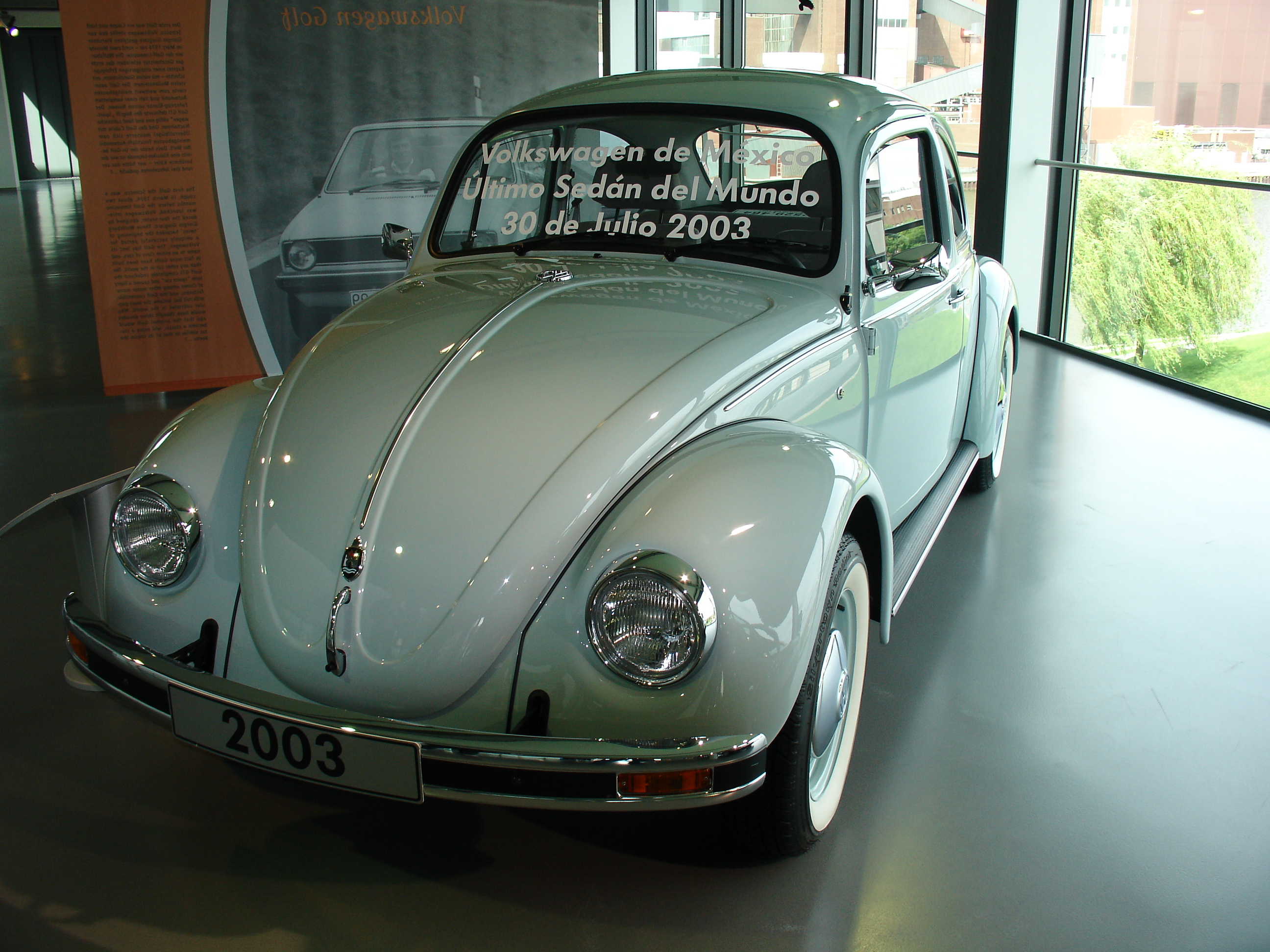In April
1934 an order was received from Adolf Hitler to Ferdinand Porsche to develop a
Volkswagen (literally “people’s car” in German). It must be affordable, big enough to hold a
family, strong and fast enough to travel the Autobahn.
The
Volkswagen Beetle was originally known as the Volkswagen or the VW . The first
use of the name Beetle may have been in England in 1950. There is a story that
the nickname was given to John Colborne-Baber's VW (one of the first to be seen
in England) by his son's school friends.
The VW was
well-known as the Beetle when John Lennon and friends formed their famous pop
group, The Beatles. In 1967, official Volkswagenwerk publications began to
recognize the term "Beetle". By 1969, the name Beetle had become the
official generic term.
Like its
contemporaries, the Type 1 has long outlasted predictions of its lifespan. It
has been regarded as something of a "cult" car since its 1960s association
with the hippie movement and surf culture; and the obvious attributes of its
unique and quirky design along with its low price. For example, the Beetle
could float on water thanks to its sealed floor pans and overall tight
construction, as shown in the 1972 Volkswagen commercial:
I learned
how to drive a stick shift in a white Beetle when living in Tripoli, Libya; I drove
a white fast back in Cairo, Egypt; and in Newtown, Connecticut I drove a bright
red Volkswagen Karmann Ghia. The VW was
a part of my life for two decades and I loved driving them all.
(Photo by Hasse Aldhammer, Creative Commons License; http://commons.wikimedia.org/wiki/File:Volkswagen_Bubbla_sista_bilen.jpg)
(Photo by Hasse Aldhammer, Creative Commons License; http://commons.wikimedia.org/wiki/File:Volkswagen_Bubbla_sista_bilen.jpg)
The very
last Volkswagen Beetle was manufactured in Puebla, Mexico, July 30, 2003,
rolling off the assembly line to the music of a Mariachi Band. It now lives in a museum in Mexico City.
 |
A Beetle
decorated in the Huichol style of beading now on display at the Museo de Arte
Popular in Mexico City. Creative Commons License; http://commons.wikimedia.org/wiki/File:Vochol09MAP.jpg "Vochol09MAP"
by Museo de Arte Popular.
|
The ladybug is a beetle that helps control the
aphid population.

(Photo by Gilles San Martin, Creative Commons License; http://commons.wikimedia.org/wiki/File:Coccinella_magnifica01.jpg)
Beetle designs are in Quilts
The VW that thinks it is a spider

VW Spider bug located on US77 just about ½ a mile north of Lexington, Oklahoma. The Spider Bug sculpture stands on the side lot of a VW graveyard and at one point in the past it overlooked a small auto racecourse that’s long since been reclaimed by weeds and scrub.
Let us tell the tale of a very interesting beetle: the Dung Beetle, neither a spider nor a car but the ultimate recycler.
Dung beetles are beetles that feed partly or exclusively on dungs or feces. One dung beetle can bury dung that is 250 times heavier than itself in one night.
Dung beetles
do just what their name suggests: they use the manure, or dung, of other
animals in some unique ways! These interesting insects fly around in search of
manure deposits, or pats, from herbivores like cows and other barnyard and
domestic animals.

Those that
eat dung do not need to eat or drink anything else, because the dung provides
all the necessary nutrients. No junk food for them. The beetles do a service by
processing the dung dropped in pastures and open land and also reduce
greenhouse gases and the fly populations.
Without the dung beetle, livestock would be out standing in their ... field.
The sacred
scarab of ancient Egypt, found in many paintings and jewelry, is a dung beetle.
Ancient Egyptians thought very highly of the dung beetle, also known as the
scarab. They believed the dung beetle kept the Earth revolving like a giant
ball of dung, linking the insect to Khepri, the Egyptian god of the rising sun.
In 2013, a
study was published revealing that dung beetles can navigate when only the
Milky Way or clusters of bright stars are visible. When the scientists put tiny
black, cardboard hats on the beetles, to block their overhead view, the insects
meandered hopelessly. When the beetles wore clear plastic hats, they rolled
straight. They probably found the tiny hats for beetles on E-Bay. One can find the most impossible things
there.
So what’s so
great about dung beetles? They are mighty recyclers! By burying animal dung,
the beetles loosen and nourish the soil and help control fly populations. The
average domestic cow drops 10 to 12 dung pats per day, and each pat can produce
up to 3,000 flies within two weeks. In parts of Texas, dung beetles bury about
80 percent of cattle dung. If they didn’t, the manure would harden, plants
would die, and the pastureland would be a barren, smelly landscape filled with
flies! While we enjoy our hamburgers, the dung beetle is enjoying the beef
by-products.
We suppose
that we are superior to dung beetles, but are we really? At least dung beetles
recycle. We scavenge, hoard, consume…what? Crap, mostly. It piles up around us;
increasingly we live on a ball of it. But the dung beetle takes a pile of crap
and recycles and makes it a home.
We may
question their lifestyle, but it’s certain that our world would be a much
smellier place without the mighty dung beetle!


No comments:
Post a Comment